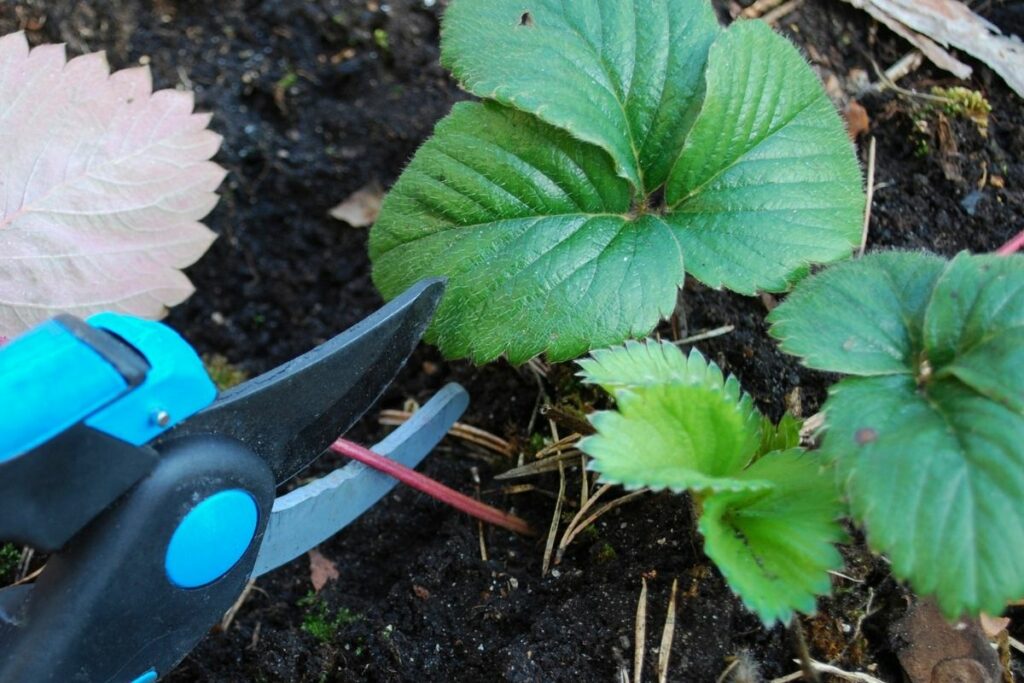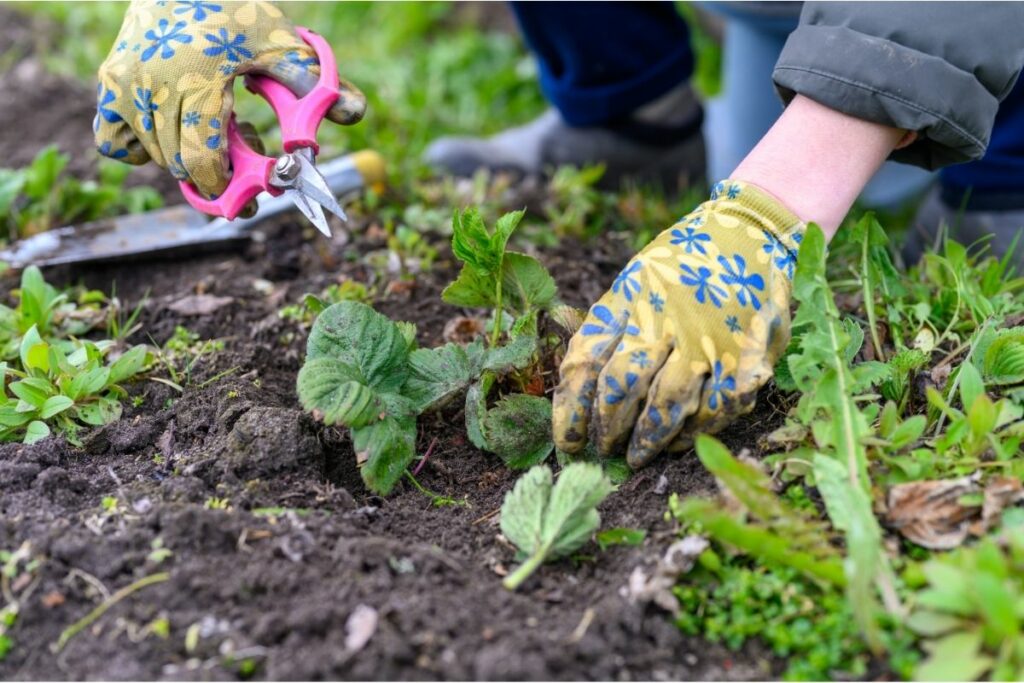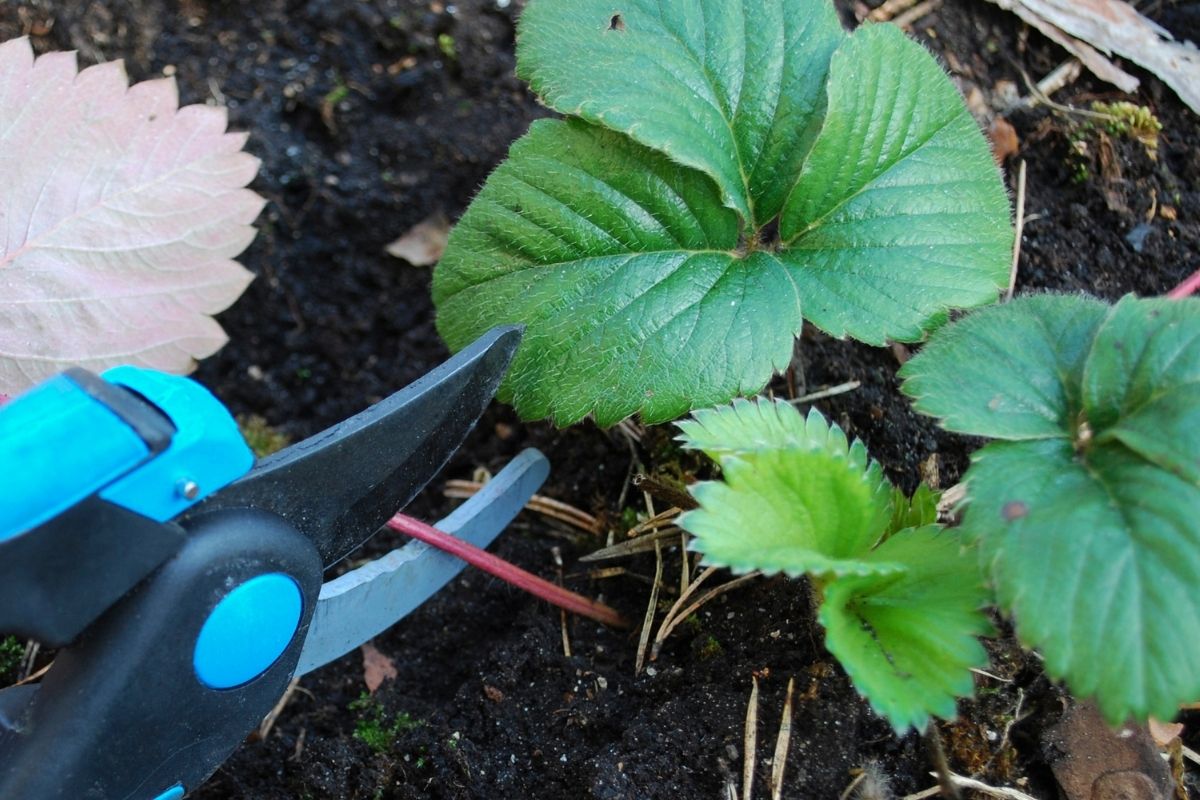Strawberries are an incredibly popular fruit to grow and care for. They are quite simple to keep in your garden, and even beginners can work with them.
However, if you want them to grow strong and healthy, it is important that you regularly maintain them, and this involves a lot of pruning!

Pruning your strawberries correctly might seem difficult at first, but once you know what you are doing, you will find the whole process quite calming, and your strawberries will grow bigger and stronger because of it.
I have put together a complete guide on how to prune strawberries properly below, so read on to find out everything you need to know!
How To Prune Strawberries Properly In 7 Steps
When it comes to pruning strawberries properly, it is important to take your time and do every step in order.
If you have never pruned strawberries before, don’t panic! The steps I have included here will show you exactly what you need to do.
Remember, don’t rush, and take your time to understand what you are doing. Your strawberries will thank you for it, and when you have done it enough, this whole process will become second nature to you!
Step 1: Remove Any Foliage
Strawberries typically come into season and fruit during the late summer/early autumn, and while they are growing, it is normal for foliage to find its way onto the crop patch.
The first thing you need to do is remove that foliage. Remove any dead leaves or rubbish – or anything else that doesn’t belong on your strawberry patch, for that matter.
You can do this all in one go, or you can do it periodically over a few weeks. It really depends on how much time you have to spare.
Step 2: Cut Away Old Leaves
Once you have removed the foliage from around your strawberry plants, you then need to focus on the old leaves.
Old leaves on a strawberry plant can be distinguished by their colour – they are usually yellow and don’t look as healthy as the rest of the plant.
Dead or old leaves on the plant do not contribute to the plant’s growth, and they can actually hinder the plant’s overall progress in growing.
Removing these leaves means your strawberry plant has more energy, and it will grow bigger and stronger.
Step 3: Get Rid of the Runners
Strawberries have a bit of a reputation as being an invasive plant. You can put one single plant in the ground, and suddenly, there are loads growing all over your garden.
While you are pruning your strawberries, it is very important to get rid of these ‘runner’ plants to prevent an overpopulation of strawberries in your patch.
Strawberry runner plants can be distinguished by a horizontal stem that stretches a noticeable distance from the plant.
All you have to do is trim these stems back to the original plant in order to stop the runners from growing into their own plants.
Step 4: Remove The Flowering Stems
Some stems or stalks on the strawberry plant will actually flower if you leave them long enough.
The flowering stems will use up more energy while they are still attached, and this means that your strawberries won’t grow as big.
To remove the flowering stems, simply use your forefinger and thumb to tweeze the flowering stems off.
You may need to keep an eye on the flowering stems for a few days, as it is not uncommon for them to regrow during the growing season.
Step 5: Cut Back Flower Clusters
In some cases, flowers will bloom before you have caught them in their flowering stage.
In order for your strawberry plant to successfully produce fruit, it needs flower clusters to develop a crown at least 0.39 inches in diameter and have at least five leaves.
All you have to do for this step is look for the smaller flower clusters that do not meet these requirements and remove them.
You can use the same tweezing method you used in Step 4 to get rid of them.

Step 6: Remove Excess Strawberries
There’s a differing opinion on this one, but I’ve found it’s important to keep the number of strawberries on your plant low before harvest season. T
his gives your plant more energy to grow more strawberries, which means you will have a more bountiful harvest.
Some gardeners say you should do this, while others simply skip this step completely.
You may want to follow this step yourself or get a second opinion before you do. I have included it here, just in case!
Step 7: Cutting The Crowns
Finally, strawberry plants often develop crowns that can be found at the base of the bottom stems.
Removing the crowns helps the plant grow better, which, in turn, means the harvest will be more abundant.
When it comes to removing the crowns, you can simply use a small knife to slice them off.
Try to avoid cutting off the newer crowns (because this can hinder the plant’s overall growth) and go for the older ones instead.
Older crowns are typically bigger and are yellow(ish) in colour.
Once you have cut the older crowns off, you have finished pruning your strawberry plant, and you can wait for the harvest season to come around.
Tips & Tricks For Pruning Strawberries
The best time to prune your strawberry plant is during the late winter months/early spring months, so between February or early March.
If a runner plant has rooted in during the pruning process, it is better to leave it alone as pruning it at this stage can damage the plant.
When it comes to removing leaves, only remove the dead ones. If the leaves are green, leave them on the plant!
Final Thoughts
Pruning your strawberry plant is incredibly important, especially if you want your strawberries to fruit abundantly.
Even if you have never cared for a strawberry plant before, the steps I have provided here will help your strawberry plant fruit successfully for the harvest season!
- Can You Grow Bell Peppers Indoors? A Guide For New Gardeners - November 14, 2023
- Composting Basics: Can You Compost Mushrooms? - November 6, 2023
- A Gardener’s Guide To Growing Carrots In Raised Beds - November 1, 2023

